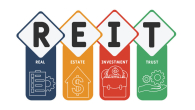
Home Equity Lines of Credit vs. Home Equity Loans
Owning a home is a significant achievement, offering stability and the potential to build wealth. But sometimes, life throws curveballs, and you might need to tap into that wealth to cover unexpected expenses, embark on home improvements, or consolidate debt. This is where home equity products come in, offering options to leverage the value you’ve built in your property. However, navigating the financial world can be confusing, especially when faced with similar-sounding terms like home equity line of credit (HELOC) and home equity loan. Fear not, for this comprehensive guide will shed light on these financing tools, highlighting their similarities and key differences to help you make informed decisions.
The Essence: Borrowing Against Your Home Equity
Both HELOCs and home equity loans allow you to borrow money against the equity in your home. Equity represents the difference between your home’s current market value and your outstanding mortgage balance. Essentially, it’s the portion of your home that you truly own. By using your equity as collateral, lenders feel more secure in extending credit, offering you potentially lower interest rates compared to unsecured loans.
HELOC: A Revolving Credit Line
Think of a HELOC as a giant credit card secured by your house. You receive a credit limit based on your home’s value, loan-to-value ratio (LTV), and creditworthiness. During a draw period (typically 10 years), you can freely withdraw funds as needed, up to your limit. Only the amount you withdraw accrues interest, making it a flexible option for ongoing expenses or unexpected needs. Once you’ve borrowed money, you can repay and reuse the available credit throughout the draw period. However, after the draw period ends, you enter a repayment period (around 20 years) where you must repay the entire balance plus interest, similar to a traditional loan.
Home Equity Loan: A Lump Sum Solution
A home equity loan, on the other hand, functions more like a traditional loan. You receive a fixed sum of money upfront, based on your approved loan amount and LTV. The interest rate is also fixed for the entire loan term, offering predictability in your monthly payments. You then repay the loan amount plus interest in fixed monthly installments over a predetermined loan term (usually 5-20 years). This option suits borrowers with specific, one-time expenses like major home renovations or debt consolidation.
Similarities: Shared Roots
While distinct in their structures, HELOCs and home equity loans share some common ground:
- Both leverage your home equity: They use your home as collateral, requiring good creditworthiness and homeownership.
- Both offer potentially lower interest rates: Compared to unsecured loans, their secured nature allows for more competitive rates.
- Both require careful consideration: Understand the terms, fees, and potential risks before committing.
- Both can impact your credit score: Responsible use can boost your score, while missed payments can damage it.
Key Differences: Choosing the Right Path
Despite their shared foundation, these financing tools cater to different needs and financial situations. Here’s a breakdown of their key differences to help you decide:
| Feature | HELOC | Home Equity Loan |
|---|---|---|
| Access to funds | Flexible, withdraw as needed | Fixed sum upfront |
| Interest rate | Variable, based on market | Fixed for the entire loan term |
| Monthly payments | Variable, interest-only or | Fixed principal and interest |
| Draw period | 10 years typically | N/A |
| Repayment period | 10-20 years typically | 5-20 years typically |
| Ideal for | Ongoing expenses, unexpected | One-time, fixed expenses, debt |
| needs, emergencies | consolidation |
Remember: These are just general guidelines, and specific terms may vary depending on the lender and your individual circumstances. Consulting a financial advisor or mortgage professional can provide personalized guidance tailored to your unique needs.
The Final Decision: Knowledge is Power
Understanding the nuances of HELOCs and home equity loans empowers you to make informed financial decisions. Weigh your needs, repayment capacity, and risk tolerance carefully before choosing the path that best aligns with your financial goals. Remember, responsible borrowing can unlock opportunities and pave the way for a brighter financial future, while making the wrong choice can lead to unforeseen challenges. So, arm yourself with knowledge, and navigate the world of home equity with confidence
Here are 5 websites that contain information on HELOCs (Home Equity Lines of Credit) and Home Equity Loans:
- Bankrate.com
Bankrate has a dedicated section on HELOCs, providing information on what they are, how they work, and tips for getting the best HELOC rates. They also offer HELOC calculators and tools. - NerdWallet.com
NerdWallet’s HELOC section covers the basics of HELOCs, including eligibility requirements, how to qualify, and the pros and cons of using a HELOC. They also provide reviews and comparisons of different HELOC lenders. - Investopedia.com
Investopedia has a comprehensive guide on HELOCs, explaining the concept, how they differ from home equity loans, tax implications, and potential risks. They also offer HELOC calculators and FAQs. - TheBalance.com
The Balance’s HELOC section provides detailed information on how HELOCs work, their costs and fees, and the application process. They also offer advice on when it makes sense to use a HELOC and potential alternatives. - FederalReserve.gov
The Federal Reserve’s website has educational resources on HELOCs, including consumer guides and brochures that explain the key features, risks, and disclosures associated with these credit lines.
These websites offer a variety of resources, from beginner-friendly guides to in-depth articles and tools, to help consumers understand and evaluate HELOCs as a potential financing option.











Leave a Reply